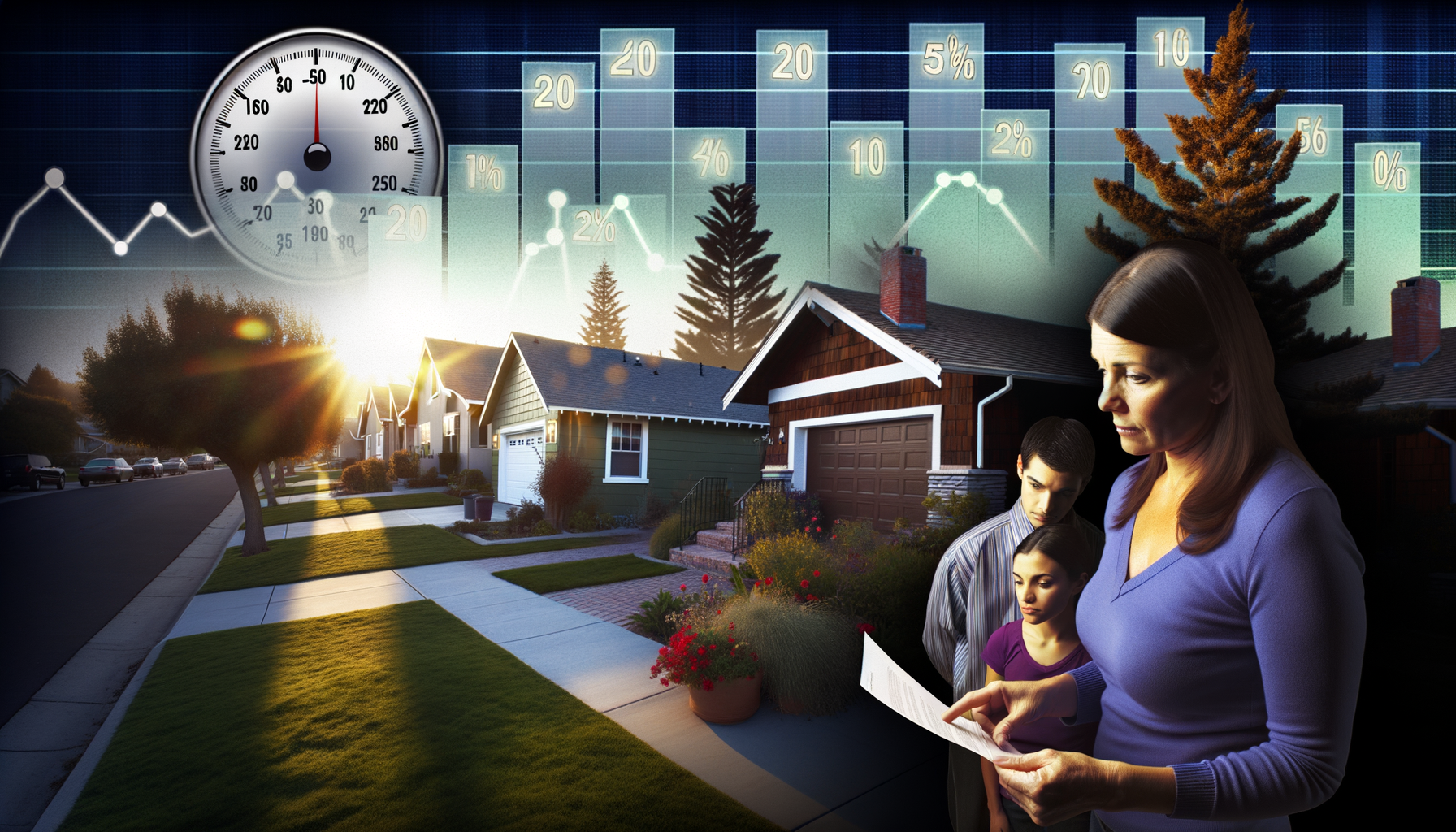Navigating the 2025 Mortgage Rate Landscape: Key Updates and Trends
Mortgage rates have a critical role in the housing market and, consequently, the broader economy. They can influence homeowner decisions on buying, selling, or refinancing homes. Understanding the factors that lead to rate changes can provide valuable insight into the financial landscape.
Mortgage rates are influenced by a myriad of variables that include economic data, Federal Reserve policy, and geopolitical events, among others. Primary among these is the role of the 10-year U.S. Treasury note yield, which often acts as a benchmark for mortgage rates.
Economic data is another significant driver of mortgage rates. Reports on employment rates, consumer spending, and gross domestic product (GDP) growth influence investor expectations about the future of the economy. Positive reports generally lead to higher rates, as investors anticipate stronger economic growth and higher inflation, which erode the value of fixed returns like those paid by bonds.
The Federal Reserve’s policies on interest rates are also crucial. When the Federal Reserve increases the federal funds rate, it becomes more expensive for banks to borrow from each other, leading to higher interest rates on loans, including mortgages. Conversely, if the Fed cuts the federal funds rate, it can lead to lower mortgage rates.
Inflation is another important factor. Since mortgages are typically paid back over a long span of time, rising inflation diminishes the value of the money lenders receive. Therefore, higher inflation typically leads to higher mortgage rates as lenders need to maintain profitability by countering the inflation rate.
Global events, such as political instability, economic crises, or pandemics, can also sway mortgage rates. In times of uncertainty, investors tend to flock to the safety of U.S. Treasury bonds, pushing prices up and yields down, which can lead to lower mortgage rates. Conversely, periods of stability and optimism typically boost yields and mortgage rates as capital moves into riskier investments.
Now, let’s break down the nuts and bolts of the main mortgage types and what influences their rates.
### Fixed-Rate Mortgages
Fixed-rate mortgages are the most common type, offering a fixed interest rate for the duration of the loan, which commonly spans 15, 20, or 30 years. These are particularly appealing during periods of low rates, as they lock in these rates for the long haul.
Rates for fixed-rate mortgages are primarily influenced by the bond market, specifically the yield on 10-year Treasury notes. The spread or difference between the yield on these Treasuries and the assigned mortgage rate reflects the mortgage lender’s assessment of market risk and the cost of securing the money to fund the mortgage.
### Adjustable-Rate Mortgages (ARMs)
Unlike fixed-rate mortgages, ARMs have interest rates that can adjust over time based on an index reflecting the cost to the lender of borrowing on the credit markets. ARMs might offer a lower initial rate than fixed-rate mortgages but pose the risk of the rate (and therefore mortgage payments) rising in the future.
### The Role of Credit Scores and Down Payments
Individual borrower factors such as credit scores and the size of a down payment also significantly affect mortgage rates. A higher credit score can result in a lower rate because it indicates to the lender that the borrower has a history of managing credit well and making payments on time.
A larger down payment reduces the lender’s risk, which can lead to a lower rate. Typically, a down payment of 20% or more is ideal for getting a better rate, as it also avoids the added cost of private mortgage insurance (PMI).
### Recent Trends
In the recent past, mortgage rates have seen historical lows, largely spurred by the Federal Reserve’s response to economic conditions resulting from the COVID-19 pandemic. The Fed slashed interest rates to near zero and took significant bond-buying actions to support the economy, which helped push mortgage rates down.
However, subsequent economic recovery and concerns about inflation have seen a gradual uptick in rates. These fluctuations are keen reminders of the inherent volatility in the mortgage market and the myriad factors influencing mortgage rates.
### Looking Forward
Forecasting future mortgage rates involves considering all these economic and geopolitical factors in conjunction with expected actions from the Federal Reserve. Analysts generally monitor economic growth projections, investor sentiment, and Fed policy intentions to make educated guesses about mortgage rate trends.
### Conclusion
For potential homebuyers or existing homeowners, understanding these dynamics can help in deciding whether to take out a new mortgage, refinance an existing one, or wait out a period of high rates. Watching economic reports, Fed announcements, and global events can provide a sense of where mortgage rates might head next, aiding in these crucial decisions.
Navigating through this landscape requires a careful approach, ideally guided by a strong grasp of how the market works and what drives changes in mortgage rates. Whether planning to buy a house or just keeping an eye on financial markets, it pays to understand the interplay of these factors and their impact on mortgage costs. This dynamic aspect of personal finance remains a crucial element for financial planning and stability.

